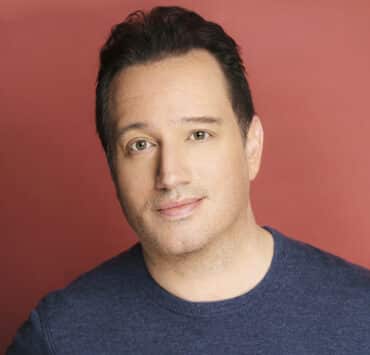|
Getting your Trinity Audio player ready...
|
Some people are born with a deep sense of self-trust, a certainty that comes with knowing deep down inside who they are. Others are born into families that provide them the security that comes with unconditional love, a foundation that allows them to act boldly and become who they were destined to be. Sometimes, it’s both.
That is exactly what I see in Marty Chavez, our cover star, and Moises Salazar, the artist featured in our inaugural arts section. These two individuals do not have much in common other than the fact that they are both Latino and both members of the LGBTQ+ community: one is a rising star in the arts world, the other a legend in corporate America. Their disciplines are diametrically opposed to one another and, as a result, Marty and Moises’s respective successes have been measured in completely different ways.
Regardless, I find something both comforting and riveting in their stories. Marty and Moises have each found the courage to pursue their purpose in life. As Ralph Waldo Emerson puts it, “Trust thyself: every heart vibrates to that iron string.” But their families just as clearly helped forge their sense of self. Their families’ unconditional support—matched with high expectations—instilled in them a self-confidence that helped propel them to success.
They have trusted in themselves and where they came from.
For Marty, it was his trust in his mother (along with his uncanny mathematical abilities) that paved his future. Spanish, his mother told him, would come back to help him. She knew that the language was both the future of this country and the soil from which the Chavez family grew its roots.
For Moises, it was the materials and techniques passed down from his family—like crochet, ceramics, paper-mache, and sewing—that eventually came back to anchor his art practice in a language familiar, haunting, and beautiful.
Both Marty and Moises have been invited into the upper echelons of their fields.
Both feel compelled to give back to younger generations because, as Moises notes in his interview with Edra Soto, it is his “duty to hold the door open to let my community inside.” And both see intersectionality as a canvas. As Marty emphasizes, “[I] never wanted to pigeonhole myself as a banker or computer scientist . . . [there are] so many blank canvases and so many possibilities at the intersections.”
Though one comes from the world of high finance and the other works in high art, both of these leaders embody the spirit of what we are trying to do here at Hispanic Executive, where our focus is to provide a platform for distinguished leaders like Marty and Moises and treat their stories with the care and attention they deserve.
And when I say distinguished leaders, I mean leaders in all fields. For me, as a former artist, this includes the most refined, exclusive of industries: the arts. As we speak, Latino artists are out there making works of art that should be showcased in the Whitney Biennial—not as the token Latino artwork in the exhibition but rather as a reflection of the art being created by the new majority.
The talent is out there, in plain sight, and we need more real estate to showcase it—be it in the pages of a business magazine or on the walls of a blue chip gallery.
That is why, in this Visibility Issue, we are using our platform to recognize, promote, and celebrate individuals from within our family who are often overshadowed. We celebrate artists like Moises. We honor the courage of those who—much like an entrepreneur—leave behind the comforts of what they know to pursue a new life and new opportunities. And we recognize the strength of individuals who have decided to share their stories despite the backlash they know they might receive.
We celebrate them for owning their whole selves, for not hiding any element that, if left in the dark, would paint an incomplete picture and limit all that they could be. We celebrate them for trusting themselves, and for trusting us to tell their stories.

